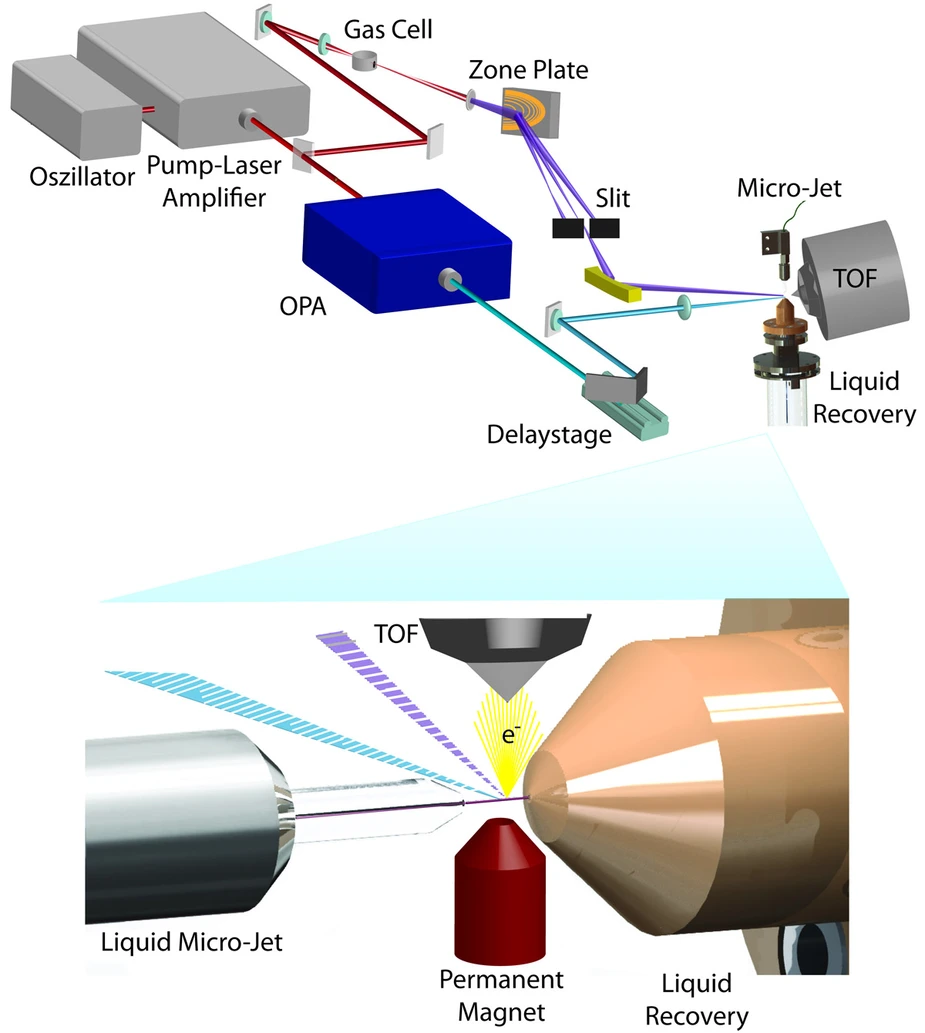New tool for Joint Lab to investigate the chemistry of nature
HZB’s Aziz’ team achieves pulse duration of 45 femtoseconds
The Aziz’ team at the Joint Laboratory between Freie Universität Berlin and HZB has built a laser-based tabletop setup which generates ultrashort XUV light pulses and achieves their monochromatization by implementing special reflection zone plates, developed and produced by the team of Alexei Erko.
HZB-scientist Emad Aziz, who leads the Joint lab between HZB and Freie Universität Berlin, has developed and installed a new tool to investigate ultrafast dynamics in solutions and at interfaces with the use of ultrashort Laser pulses. Liquid phases are a natural environment for many interesting processes in chemistry and biology, and short light pulses allow insights into electronic and structural dynamics of molecules and molecular complexes. In particular, photoelectron spectroscopy with extreme ultraviolet (XUV) radiation is a powerful method to probe the electron density in a valence shell of a molecular system. In combination with a pump-probe technique, this method enables to reveal mechanisms of molecular processes, which typically occur on the subpicosecond or femtosecond time scale.
Now Aziz and his team have built a new laser-based tabletop setup which generates XUV light pulses with a duration of 45 femtoseconds. To select specific wavelengths, they implemented special reflection zone plates, developed and fabricated in the HZB-Institute for Nanometre Optics and Technology headed by Alexei Erko. These reflection zone plates achieve monochromatization with extremely high efficiency and minimum temporal pulse distortion.
“In building up this new table-top device and testing it, Jan Metje has achieved one of the major goals of his PhD”, his co-supervisor Dr. Igor Kiyan explains. Pulse duration of 45 femtoseconds for monochromatized harmonics is 300 times shorter than the typical pulse duration of synchrotron radiation (15 picoseconds) and is comparable to the pulse length of a free-electron laser (FEL). “Our lab-based experiment has some advantages over FEL’s”, Aziz points out: “It allows time resolved photo-emission spectroscopy of molecular systems in solutions, so that we can investigate catalytic and energy materials under real conditions as well as the chemistry of natural processes which occur typically in liquid phases and at interfaces. And, last but not least, it is accessible all the time.”
More information about the new instrument is given in the publication: Monochromatization of femtosecond XUV light pulses with the use of reflection zone plates (doi:10.1364/OE.22.010747)
Contact:
Further information:
Prof. Dr. Emad Flear Aziz
Tel.: (030) 8062-15003
E-Mail: emad.aziz(at)helmholtz-berlin.de
Press officer:
Dr. Antonia Rötger
Tel.: (030) 8062-43733
Fax (030) 8062-42998
E-Mail: antonia.roetger(at)helmholtz-berlin.de
